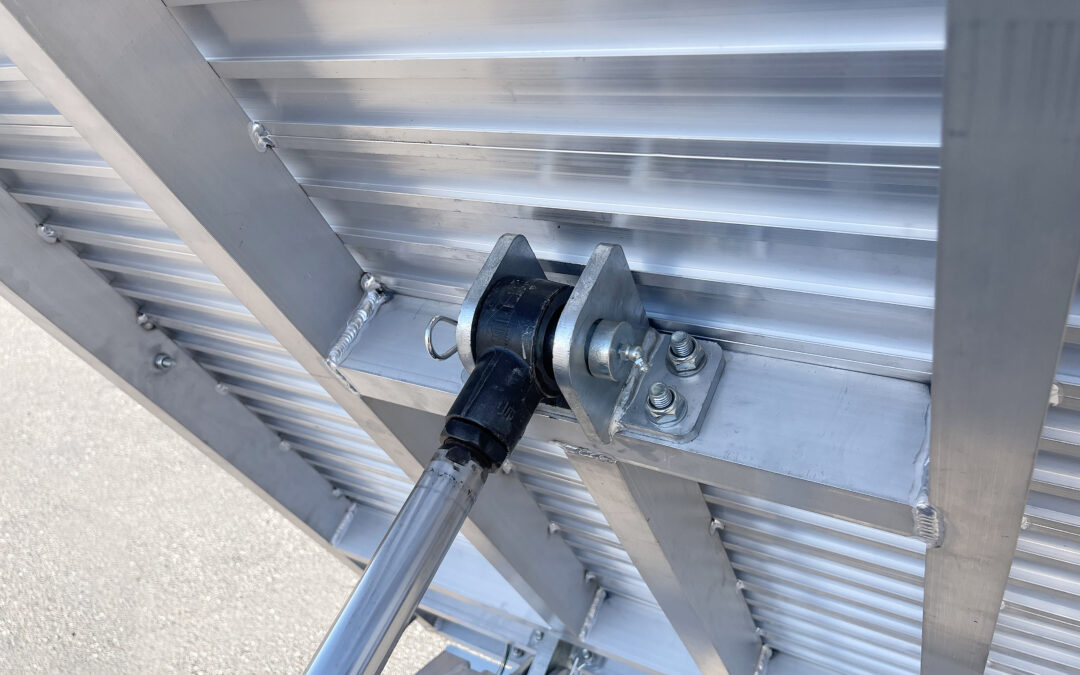There is a lot more to utility trailers than just their weight and how much they can haul. Utility trailers come with many different useful parts that are highly useful for owners and future owners to know about. It can be a tedious process researching these trailer parts on your own, so for your convenience below is a consolidated list of the top utility trailer parts to know:
Trailer frame: The main structural component of a utility trailer that supports the wheels, axles, and other parts. It is the foundation upon which all other components of the trailer are mounted. Trailer frames are typically made of steel, aluminum or wood. It is commonly agreed upon that aluminum is the most durable and lightweight material for trailer frames. Primo Trailers are made of aluminum and considered some of the best utility trailers on the market today.
Axles: Axles support the wheels and allow the trailer to be moved. Usually they are made of steel and are designed to transfer the weight of the load from the frame of the trailer to the wheels. Axles can be either single or double (tandem) depending on the weight of the load. It is important to know that the axles on a trailer must be rated for the weight of the load being transported so as not to overload the trailer.
Wheels and tires: Wheels and tires are components that provide the contact between the trailer and the road. Usually they are made of steel and are rated for the weight of the load being transported.
Suspension: The suspension system is a set of components that helps to absorb bumps and shocks on the road while the trailer is in motion. It helps to improve the ride comfort and it can be either leaf spring, torsion, independent or air-ride type. The choice of suspension system depends on the weight and type of the load being transported. Even further, the choice can be affected by the terrain the trailer is traveling on.
Hitch and Coupler: The hitch and coupler are the components that connect the trailer to the tow vehicle. The hitch is what allows the trailer to be pulled and the coupler is the part that holds the trailer in place while being towed. Both components are typically made of steel and must be rated for the weight of the load being transported. The most common types of hitches are ball hitches, fifth-wheel hitches, and gooseneck hitches. Couplers are commonly a-frame, straight-tongue, or pintle hitch.
Lighting and Electrical: The lighting and electrical system includes the lights and wiring that are used to power the trailer’s turn signals and any accessories that may be on the trailer. The lighting and electrical system is an important safety feature that is highly recommended you learn more about. The lighting and electrical system of a trailer includes: tail lights, clearance lights, marker lights, wiring, connectors, and breakaway switch.
Brake system: The brake system is used to slow down or stop the trailer. It can be electric or surge brakes. Some systems are designed to work in conjunction with the brakes on the towing vehicle. Regardless, it needs to be compatible with the tow vehicle’s brake system.
Jack: The jack is a mechanical device that is used to support and level a trailer when it is not connected to the towing vehicle. Usually, the jack is attached to the trailer’s tongue and extends vertically to the ground.
Tongue: The tongue is the part of the trailer that extends forward from the coupler and attaches to the hitch on the tow vehicle. The tongue is designed to transfer the weight of the trailer and the weight of the cargo to the hitch on the towing vehicle.
Ramp: The ramp is used to load and unload heavy items from the trailer. They can be folding or telescoping allowing for easy storage when they are not in use. Ramps come in a variety of types and sizes.
Contact Primo Trailers for More Information
We provide the best aluminum utility trailers for everyone from first time trailer buyers to veteran trailer owners. We can help you accessorize, organize, and optimize your trailer. We encourage you to check out our website at www.primotrailer.com and reach out to our sales team.
You can also stay up to date with the latest news from Primo Trailers by following us on Linkedin, Facebook, Twitter, Youtube and Instagram.
